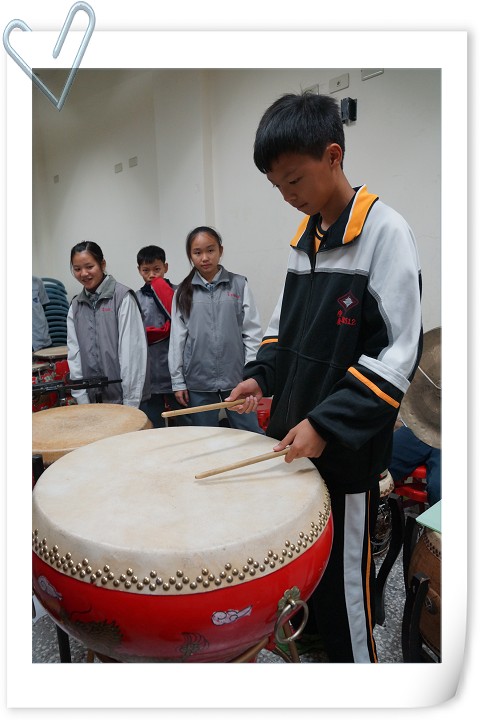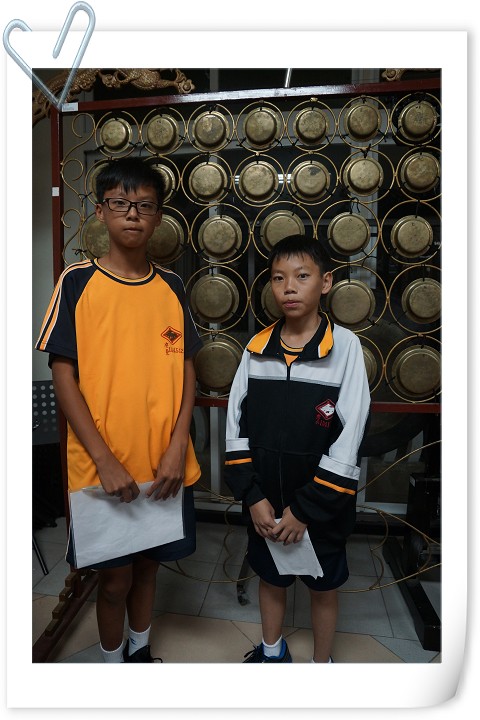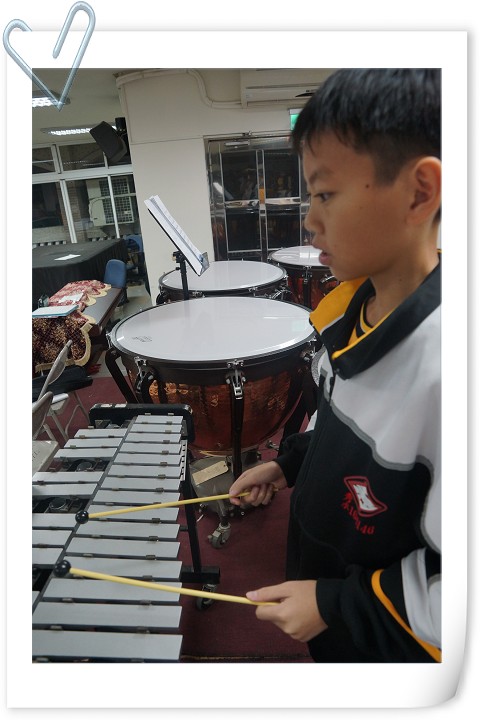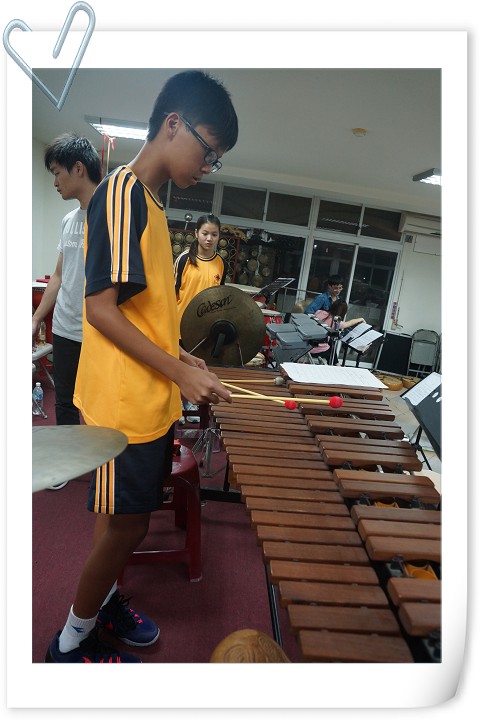The Introduction and Experience of Percussion Instruments
Timpani |
 Experiencer: Experiencer:
Cuei-ling Liang |
The timpani is a membranophone with soft and profound sounds which can enhance the momentum of music. It is the cornerstone of CCCO. |
Experience Sharing |
When you strike timpani, it can produce very loud sounds. Even if you strike it gently, its rich voice can spread around. It was very impressive. It would be realistic if it is used to imitate the sound of thunder. |
Dagu |
The dagu (Chinese base drum), also called as the datanggu, has big appearance. The diameter of the drumhead is generally above 45cm. Two drumheads cover the wood drum body. It is played with two wooden hammers and produces deep and thick sounds. |
Experience Sharing |
The dagu can produce very bright sounds. With a gentle strike, its sounds echo in the classroom for a long time. |
 |
 |
Experiencer:
Jhe-rong Jhang |
Experiencer:
Cuei-ling Liang |
Yunluo |
Traditional yunluo is a set of gongs with equal diameter and different thicknesses and pitches mounted in a wooden frame. After improvement, the gongs of the yunluo have different diameters and thicknesses. It is common to have 36 gongs. The yunluo has clear and mellow sounds with long and low lingering sounds. |
Experience Sharing |
The yunluo has many drumheads, with each drumhead producing similar sounds. One can only distinguish them by careful listening. Adjacent drumheads produce similar sounds. I used a soft drumstick today to produce soft and nice sounds. |
 |
 |
Experiencer:
Jhe-rong Jhang, Jheng-en Chen |
Experiencer:
Li-jie Lin, Cuei-ling Liang |
Glockenspiel |
The earliest glockenspiel was a set of tuned small bells. Later, for the convenience of carrying, the small bells were replaced by metal plates. With the increase of tone, the length of sounds shortens from left to right. |
Experience Sharing |
I found it interesting to beat glockenspiel. I liked its crisp sounds. I played glockenspiel tool when I was young. But the glockenspiel of CCCO had many keys which seemed difficult to play. |
 |
 |
Experiencer:
Li-jie Lin |
Experiencer:
Jheng-en Chen |
Xylophone |
 Experiencer: Experiencer:
Jhe-rong Jhang |
The xylophone has narrower keys but higher range of voice and crisper sounds than glockenspiel. In recent years, symphony orchestras often include it. It is also often used in comedies and loved by everyone. |
Experience Sharing |
I felt that the tone of the xylophone was higher than that of glockenspiel. In comparison, I preferred glockenspiel due to its softer and brighter sounds and nice tone. |
The interview photos in this page are taken by the crew members.

